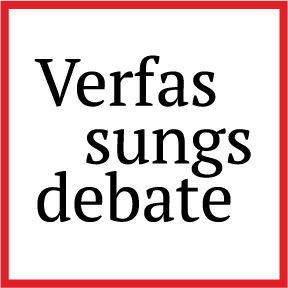Ethnically Stratified Citizenship
What the Advocate General Sidestepped, and the Court Should Note before Deciding the Danish Ghetto Area Case
The ECJ is soon to render its judgment in C-417/23, Slagelse Almennyttige Boligselskab, also known as the Danish Ghetto Area case. The case turns on the question of whether a Danish law requiring development plans, including evictions of public housing tenants, in areas where more than 50 percent of people are classified as “non-western immigrants and their descendants” constitutes discrimination based on race or ethnic origin. In her opinion, Advocate General Ćapeta framed the issue as being about discrimination of residents based on their ethnic origin. Her framing sidestepped an important aspect of the case, one that the Court should consider in its deliberations, namely, that in Denmark, people classified as “non-Western immigrants and their descendants” can be Danish citizens. This case is therefore about EU citizenship and raises the specific question of whether EU law should accept stratification of EU citizenship along ethnic lines. I will argue that the Court should not.
Statistical classifications
The idea that a citizen of an EU member state can be designated as a “non-western immigrant and their descendants”, and as such be treated differently, might go against the presumption of the generally civic minded who could believe that today, in 2025, citizenship is a category without internal distinctions. Nevertheless, as of 1 January 2025, 304,990 Danish citizens are classified as “immigrants and their descendants” and within this group 253,651 people are specifically classified as “non-western immigrants and their descendants”. The term “non-western” refers to all of the countries of the world except EU Member States, Andorra, Iceland, Liechtenstein, Monaco, Norway, San Marino, Switzerland, the United Kingdom, the Vatican City State, Canada, Australia, the United States, and New Zealand. To be classified as a Danish citizen “of Danish origin”, one does not have to be born in Denmark but one must have at least one parent who is both a Danish citizen and born in Denmark.
These classifications – immigrant, descendent, non-western, of Danish origin – come from Danmarks Statistik (Statistics Denmark), which is a Danish state agency. The agency’s statistical definitions are sometimes used in legislation, such as the Law on Public Housing at stake in Slagelse Almennyttige Boligselskab. The Law on Public Housing requires the adoption of development plans for public housing units including evictions of tenants in certain residential areas currently defined as “parallel societies” and “transformation areas” (between 2018 and 2021 as “Ghetto Area” and “Hard Ghetto Area”), which are areas characterized by social-economic criteria relating to income level, criminal convictions and education, and where in addition more than 50 percent of the population is classified as “non-Western immigrants and their descendants”. The case concerns two different development plans, one for the Mjølnerparken area and one for the Ringparken area, that entailed removing tenants in public housing from their homes.
The question, here summarized very briefly, that the Court of Justice of the European Union is about to decide is whether this law requiring such development plans based on the “non-western immigrant and their descendant” criterion violates the right to not be discriminated against based on race or ethnic origin as guaranteed in the Race Equality Directive.
Different aspects of the case and of the Advocate General’s Opinion from February this year have been insightfully discussed in this blog by Silvia Steininger and Sarah Ganty and Karin de Vries, and elsewhere by Iyiola Solanke and Lucía López Zurita. This post adds to this growing body of commentary by arguing that the fact that “non-western immigrants and their descendants” can be Danish citizens should be central to the Court’s reasoning. It would in fact appear from the request for a preliminary ruling that the majority, if not all, of the 11 applicants in the Mjølnerparken area case and three out of four of the defendants in the Ringparken area case have Danish citizenship. Based on the documents available to the public it is uncertain how many of the applicants are classifiable as “non-western immigrants and their descendants”, but it appears from the documentation that a majority falls into that category.
Constructing the comparator
To assess whether direct discrimination has occurred, the Advocate General arranges the relevant comparison as being between “western residents” and “non-western immigrant” residents in “vulnerable” social housing areas. The main and compelling reason to do so is that it follows the structure of the Law on Public Housing. That law first designates “vulnerable areas” only using the socio-economic and criminality-oriented criteria, and then adds the “non-western criteria” to designate “parallel societies” and “transformation areas”. By constructing the discrimination assessment in this way, one considers residents in two similar areas only distinguished by the percentage of “non-western immigrants”. It is only the latter type of resident that is subject to development plans including lease terminations.
I would suggest, however, that the Court should consider instead whether the relevant comparison in the case is in fact between two types of Danish citizens who are tenants in public housing in a “vulnerable area”, namely those that are classified as “non-western immigrants and their descendants” and those that are not.
The difference between these two modes of constructing the comparator for establishing direct discrimination is that the latter places the status of citizenship front and centre. This makes visible the fact that the difference in treatment is not between types of “immigrants” as defined by a statistical agency or within the more generic category of resident, but between those with membership in the state, and the rights and duties that follow. Foregrounding the fact that someone classified as a “non-western immigrant and their descendant” can be a Danish citizen, and hence an EU citizen, underlines the democratic stakes of the case. Stratified citizenship is antithetical to the principle of equality before the law and it negates equal participation in society.
In paragraph 115, the Advocate General points out that, as has been held by the Court in C-83/14, CHEZ, a
“person who is a victim of discrimination and who turns to a court for legal protection need not belong to the ethnic group treated less favourably; that person may simply be a collateral victim”.
This means that even if not all of the individuals faced with eviction decisions were Danish citizens classified as “non-western immigrants and their descendants”, but perhaps Danish citizens “of Danish origin”, or Danish citizens classified as a “western immigrants”, or not a Danish citizen at all, discrimination based on ethnicity could still have occurred because the development plan was based on an ethnic criterion.
Seeking to treat citizens differently based on race and ethnicity is a form of law-making that has historical precedent in Europe, and appears to be returning because of the resurgent influence of nationalist political practices across several of the member states. In the Action Plan on Integration and Inclusion 2021-2027 the EU Commission included a distinction between “EU citizens”, “third-country migrants”, and “EU citizens with migrant background”. This distinction appears to be a recent addition to EU policy making, and in any event was not used in the preceding action plan.
One concerning trajectory to observe here is when distinctions between groups of EU citizens swirling around in policy documents on integration, national and European, end up resulting in one group of EU citizens being treated less favourably under the law based on their ethnicity. There are therefore good reasons to establish direct discrimination in C-417/23, Slagelse Almennyttige Boligselskab, not against “immigrants”, or residents, but against citizens on the basis of their ethnicity. There are also good reasons to call for caution about a legal development that would re-introduce ethnic stratification of citizenship in Europe.
And/or
The Advocate General’s Opinion appears to assume that people classified as “non-western immigrants and their descendants” cannot be Danish citizens. At least, this is what a plain text reading of the wording in paragraphs 88, 113, 114 and 116 suggests. Another reading would be that she is sidestepping the question of citizenship, so as to focus on residents.
It should be noted however, that the first sentence of paragraph 11 on the background of the case reads differently in English and Danish. The English version reads: “The referring court further explains that an ‘immigrant’ is a person born abroad and neither of whose parents was born in Denmark or is a Danish citizen.” The Danish language version instead reads “person born abroad and neither of whose parents was born in Denmark and is a Danish citizen” (emphasis added). The word “and” has thus been switched for “or” in the English translation. The Danish language version corresponds to the definition of “immigrant” given by Statistics Denmark. The incorrect English language version does not reflect how hard it is to be considered Danish in the eyes of the Danish state.
In paragraphs 73 to 74, the Advocate General states that “a division on the ground of ‘ethnic origin’ can be understood as a division between ‘us’ and ‘them’”’ and she continues to say that the “development of a society that is tolerant to ethnic differences would entail the recognition of equal rights for ‘them’, despite the belief or perception that ‘they’ possess different characteristics to ‘us’.”
To this important point I would add that it should at the outset be affirmed that the development of a society that is tolerant of ethnic differences would entail the recognition of equal rights and standing for all of its citizens. A focus on citizenship should not come at the cost of those without citizenship, which may be a risk of the reasoning I am suggesting. On the other hand, if it is accepted that citizenship can be divided along ethnic lines under the law, into what society are those without citizenship supposedly “integrating”?
It should be noted, as the Advocate General does in paragraph 145, that one can use statistical information about the population, citizens and non-citizens, for positive action. The Danish state could have sought to improve residential areas without evicting its residents. Such actions would not have constituted direct discrimination, which is defined as unfavourable treatment.
While the term slippery slope is perhaps overused in these times, the move from statistics to legislation and then to discrimination in the interaction between state and citizen, is one such slope. The Court now has an opportunity to rely on its history of anti-discrimination jurisprudence and robust EU penumbra of non-discrimination sources, most importantly the Race Equality Directive and Article 21 of the Charter, to rule against ethnic stratification of EU citizenship.



